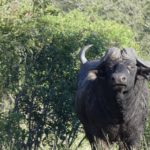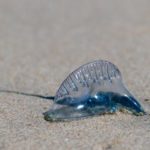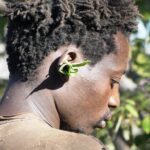Leopards (Panthera pardus) have a wide distribution range in Sub-Saharan Africa, which, however, becomes increasingly fragmented due to human activities and habitation. In the Southern African region, within the Republic of South Africa, only about 20% of the land area remains suitable leopard habitat, with a similar situation in Zimbabwe. In Namibia, Botswana, and Mozambique, the distribution range is significantly larger.

Density of a leopard population
The density of leopard populations does not depend on the size of the lion population (a line of thought until 2017) but on environmental and habitat factors. A scientific article proving this fact can be found here. Still, lions kill, on average, about 20% of the leopard population they coexist with.
Finding leopards and their behavior
Finding leopards depends on experience and luck. Male leopards establish territories, which they defend against other males but let females freely roam through. Marking these territories is done by urinating at the borders, scratching trees, rubbing their cheek glands, and roaring (which is more of a rasping sound). Therefore, males can be found in a particular area which they prefer. Although their territory can be between 10 to 100 square kilometers, they like to concentrate on areas with a good overview for spotting prey. Therefore, Granite koppies (boulder-strewn hills), giant boulders, or large trees on a slope are their preferred roosting areas. If being close to a leopard, they can be smelled by their typical ‘Popcorn’-smell. If you smell cats, it’s lions; if you smell popcorn, it’s a leopard.
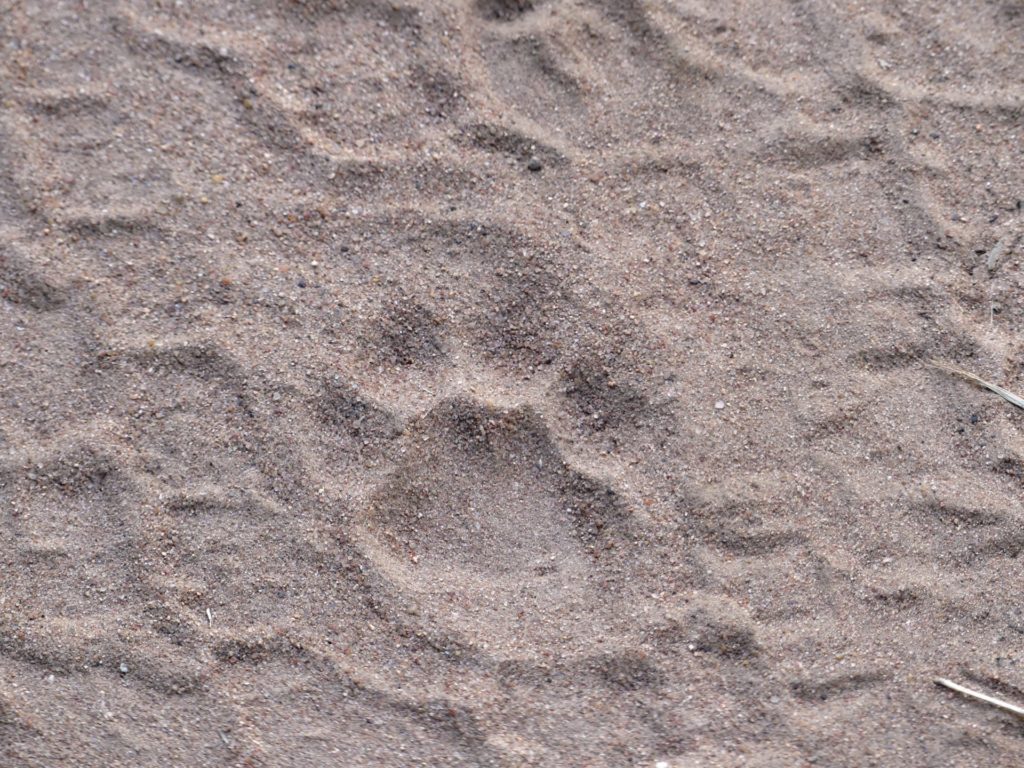
Often, fresh leopard tracks will be found. Sometimes, you can smell them. But very seldom, you’ll see leopards. Exceptions occur in Private Game Reserves, where the Field Guides know exactly the preferred whereabouts of these cats. If you are not on a guided tour, leopards can be seen in the evenings, when they start walking around for hunting, or in the morning when warming up on an eastward-facing exposed area (boulder, granite flat, ant hill, …) or at their kill in a tree. But if too many activities surround them, they will disappear and play ‘Flat Cat.’ Crouching to the ground – it will be nearly impossible to see them anymore.

Leopards’ typical prey is small—to medium-sized herbivores, such as Impalas, Zebra foals, and their most hated animal, Chacma baboons.

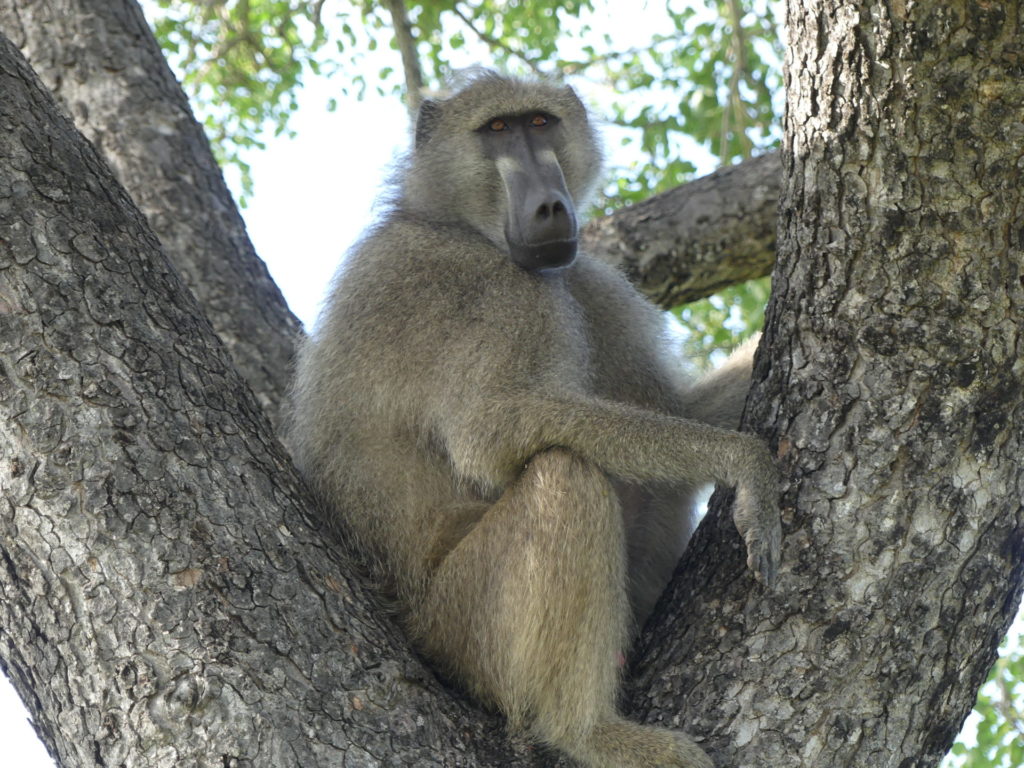
Are leopards dangerous for humans?
Leopards pose the least danger amongst the ‘Big-5 + 3’ (African Elephant, African Buffalo, Black Rhino, Lion, Leopard, Hippo on land, Spotted Hyaena and Nile crocodile) when walking in Big-Game country. They typically shy away from humans and are no threat if left alone. Nevertheless, there were cases recently where a 2-year-old toddler was attacked in a compound in the Kruger National Park or a Field Guide was attacked in his vehicle. When wounded, threatened, or cornered, they will become very aggressive. Fatality figures for Southern Africa are not available, but in India, each year, between 10 – 15 people will be killed by leopards (not including occasional man-eaters). On the other hand, each year in Africa, about 2500 leopards are killed by so-called ‘hunters’ as a trophy!
How does a leopard attack on humans proceed?

If faced with an aggressive leopard, the standard recommendation is to face them and retreat slowly. I have never been in such a situation. I, therefore, can only state that it is recommended by FGASA (Field Guide Association of Southern Africa) to avoid any eye contact with the leopard, as this will further infuriate the animal. According to them, a leopard attack will be, in most cases, repeated mock attacks within very close quarters, from constantly changing sides, and it is very noisy and scary. There can be either only one mock attack or such attacks will be repeated for a considerable time – always coming from different directions.
The most important thing is not to turn the back on the leopard and NEVER RUN. Only prey runs away; a leopard in an attacking mood will charge the runner instinctively and thoughtfully.
Lessons learned about leopards.
- Leopards are pretty shy and docile animals who want to be left alone
- Leopards suffer from population growth and increasing habitat destruction
- Humans are not a natural prey for leopards, but attacks happen regularly
Further readings about Dangerous Game in Southern Africa on this website:
African buffaloes are dangerous
Lion behavior – so different by day and night
Recipe for disaster – elephant bulls in musth
Danger posed by Nile crocodiles
Spotted hyenas are successful hunters
Why are Hippos dangerous on land?
.


